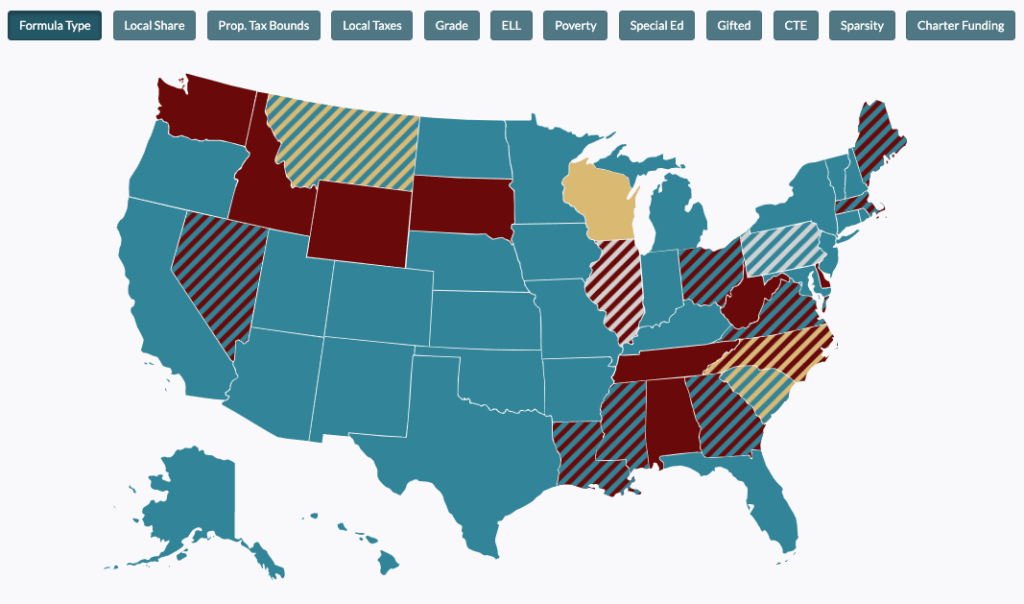There are a lot of disagreements over education policy, but many people agree that how public schools are funded needs to be fixed. In 2021, 32 governors highlighted school funding priorities in their State of the State addresses — just as a large majority do every year.
Education equity advocates should play a key role in guiding school funding conversations to promote policies that provide more funding for the students and school communities that need the most help. But too often, state leaders provide funding policy information in complicated documents and legalese scattered across state websites, which make it difficult for advocates and policymakers to access the information they need to effectively fix our school funding systems.
There’s a tool for that.
FundEd, an interactive database of all states’ school funding policies, was created by EdBuild, a national organization focused on school funding equity. Just in time for the 2022 legislative session, The Education Trust has completed a full update of the policies presented in FundEd.
The new information in FundEd can help advocates answer the important questions that usually come up when funding reform hits the state agenda. Here are some FAQs:
When policymakers say states need to “fix the funding formula,” what policies do they actually mean?
The FundEd homepage offers a quick cheat sheet to understanding the big components of funding policy — the basic structure of funding formulas, how funding policies respond to students’ and districts’ differing needs and circumstances, and how states handle the local money side of the equation when handing out state dollars to school districts.
Isn’t the way each state funds schools pretty standard? Doesn’t every legislative body do basically the same thing?
Nope! FundEd includes interactive national maps showing the range of policies in place across the United States, in snapshot view, for each of the formula components covered in the database — things like how states structure their formulas, whether they include special funding for English learners or students from low-income backgrounds, and how they support students with disabilities.
What is my state’s school funding formula?
If you want to understand how your state currently funds schools, check out your FundEd state page — it includes summaries of all the key state funding policies that are now in place, in plain English, with links to source material so you know if the information is coming from statute, a state manual, or a legislative report.
Can I compare my state to other states?
When you pull up a state page, you’re not limited to reading about one state at a time. You can pull up multiple states side by side to compare your state’s funding system with the policies used by neighboring states — or leading states across the country. FundEd cuts through the state-specific jargon, presenting every state’s policy in the same basic terms to allow for easy comparison.
How can I share this information with my legislators, staffers, or partners?
The FundEd reports page lets you generate lots of reports that can be helpful in your advocacy — a full policy report for any state, showing all of its policies; a similar report showing two states side by side; or an issue report, showing every state’s policy on a single issue. You can download any of these in an easy-to-share PDF. You can also generate a customized report covering the set of issues and states most relevant to your advocacy agenda.
Want to take it to the next level and discover best practices for school funding?
In our experience, FundEd is the best tool out there for learning about school funding policy as it exists today. But it won’t tell you which states are getting it right, because no one state is getting it all right. But in every area of funding policy, there’s a state with a great approach. The best possible funding formula is already out there, in bits and pieces across the country.
Another EdBuild product, which was made with input from Ed Trust and other partners, pulls together those best practices to offer model funding policies. You can find those in a report called Common Sense and Fairness, and use an interactive web tool called EdBuilder to create a funding formula out of recommended policies. Together, FundEd and EdBuilder can help you chart a course from your state’s current funding policy to what is ideal for students.
Ready to dive in?
Visit FundEd, or to maximize FundEd to support your advocacy, check out the User Guide.
And here’s a short User Guide to the EdBuilder web tool.




